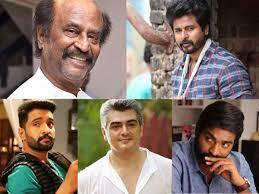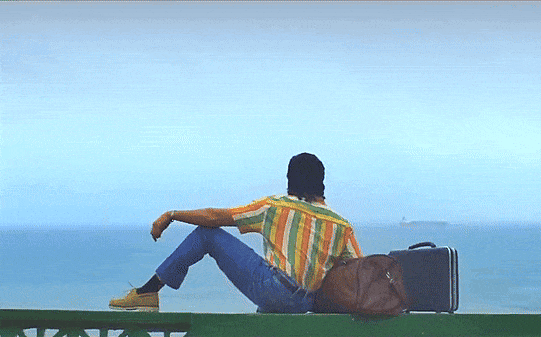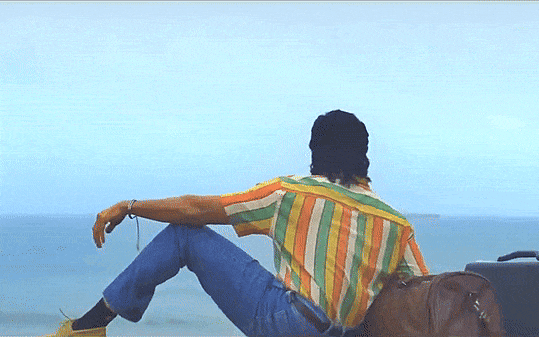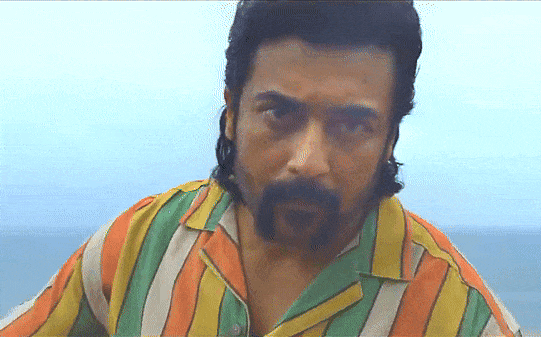#Kollywood News Tamil
Explore tagged Tumblr posts
Text
Tamil Cinema News | Latest Cinema News
Stay updated with the latest happenings in Tamil cinema on UpdateNews360. From movie reviews and celebrity interviews to box office updates and exclusive insights, we bring you the most comprehensive news from Kollywood. Whether you're a fan of action, romance, or drama, our platform covers all genres and trends in Tamil cinema. Explore stories about upcoming releases, star performances, and behind-the-scenes details that you won’t find anywhere else. Get all your Tamil movie news in one place—only on UpdateNews360. Stay informed and be the first to know what's happening in the world of Tamil cinema!
1 note
·
View note
Text
1 note
·
View note
Text


#suriya#tamil cinema#kollywood#event#fans meet#absolutely nothing new about him to post on his 27th anniversary man it's nuts. so have some recentish pics instead#can u imagine kanguva still has no confirmed release date and they didn't even bother with releasing a new poster or something for him...#mine*
7 notes
·
View notes
Text
Vettaiyan - Trailer | Rajinikanth | Amitabh Bachchan | T.J. Gnanavel | A...
youtube
#youtube#new#trending#video#viral#trailer#rajinikanth#movie#new film#film#new movie#india#indian#tamil#vettaiyan#superstar#anirudh#hindi#telugu#bollywood#kollywood#police#court#law#lawyer#action#style#songs#october#diwali
5 notes
·
View notes
Text
Ajith Kumar's "Good Bad Ugly's" Recent Regional Theatrical Distribution Rights Deal Raises Some Questions
Breaking News! Ajith Kumar's "Good Bad Ugly" might be shifting from Pongal to Summer 2025! Speculation rife as Romeo Pictures secures theatrical rights, but no Pongal mention. Is "Vidaamuyarchi" taking the slot?
Read the full article here: https://www.theomenmedia.com/post/ajith-kumar-s-good-bad-ugly-shifts-gears-from-pongal-to-summer-2025

#Movie News#Ajith Kumar#Good Bad Ugly#Tamil Cinema#Movie Update#Film Industry#Summer Release#Action Comedy#Ajith Fans#GBU#Cinema News#South Indian Cinema#Bollywood#Kollywood#Tollywood#Sandalwood#Malayalam Cinema
2 notes
·
View notes
Text

Fanboy Sambhavam in Thalaivar171
#thalaivar171#rajinikanth#lokesh kanagaraj#kalanidhi maran#anirudh#kollywood#tamil cinema#bollywood#malayalam news#theeejay#memes
7 notes
·
View notes
Text
Tamil Cinema News | Latest Cinema News
Get the latest updates on Tamil cinema with our news website! From breaking news and movie reviews to exclusive interviews and celebrity gossip, we bring you everything from the world of Kollywood. Stay informed about new releases, box office hits, and behind-the-scenes stories. Your go-to platform for all things Tamil cinema, keeping you entertained and in the loop!
1 note
·
View note
Video
youtube
அனிமல் படத்தின் பத்திரிக்கையாளர் சந்திப்பு! #bollywood #kollywood #kolly...
#youtube#today on tumblr#artists on tumblr#todaynews#cinema#tamil cinema#cinephile#movies#tamil movies#kollycinema#kollywood#trendingtopics#trendingnow#trending news
1 note
·
View note
Text
0 notes
Text
0 notes
Text
Vijay Antony's daughter Meera dies by suicide
The Tamil film industry was devastated by Meera Antony’s suicide, and the 16-year-old had apparently been struggling with her mental health for a while. Here is all the information you want regarding the heartbreaking loss. Continue reading Untitled

View On WordPress
0 notes
Text
Tamil actors play a pivotal role in Indian cinema, contributing to its rich diversity and helping it reach new heights. With legends like Rajinikanth and Kamal Haasan leading the way, and a new generation of talented actors like Vijay and Suriya making their mark, the future of Tamil cinema looks bright.

2 notes
·
View notes
Text







#NEW PADAM WE MOVE WITH PLACEHOLDER TAG AS ALWAYS. ETA: TITLE REVEALED YEEEHAWW#retro#suriya#tamil cinema#kollywood#mine*#u know you're watching a karthik subbaraj film when u see the worst moustache known to man#mullet and handlebar moustache welcome back 1980's <3 i will be there no matter what
7 notes
·
View notes
Text
Ajith Kumar's Look From Good Bad Ugly
NEW LOOK ALERT!! Ajith Kumar's leaked photos from Good Bad Ugly set are here! The actor sports a sleek, tattooed style, promising a thrilling watch. Ready for Pongal 2025?
Link to the full story: https://www.theomenmedia.com/post/ajith-kumar-s-transformed-avatar-in-good-bad-ugly-leaked-a-new-look-for-the-action-hero

#Ajith Kumar#GBU#Cinema#Tamil Cinema#Ajith New Look#Good Bad Ugly#Thala Ajith#Tamil Film#Pongal 2025#Indian Cinema#Action Comedy#Movie Update#Film Leaks#Bollywood#Kollywood#South Cinema
0 notes
Text
Why DesiCinema Continues to Captivate Audiences Worldwide

Introduction:
DesiCinema, encompassing films from Bollywood, Tollywood, Kollywood, and other regional industries, has always been a fascinating blend of tradition, emotion, and innovation. While its reach began within the Indian subcontinent, Desi films have been increasingly captivating global audiences. In this blog, we explore the core reasons why DesiCinema continues to have such a powerful cultural impact around the world.
1. Emotional Storytelling:
The Heart of DesiCinema At the heart of desicinema is its ability to connect emotionally with audiences. Whether it’s the intense drama of Bollywood blockbusters or the nuanced storytelling of regional films, DesiCinema captures universal themes of love, family, sacrifice, and identity. Movies like Kabhi Khushi Kabhie Gham and Vikram Vedha resonate with audiences from all walks of life due to their focus on human emotions and complex relationships.
2. Colorful Visuals and Music
One of the most defining aspects of DesiCinema is its use of music and visuals. From vibrant song sequences to intricately choreographed dance numbers, the energy and color in Desi films are irresistible. Music is not just a backdrop; it’s an integral part of storytelling. The songs in movies like Dil Se and 3 Idiots are as memorable as the films themselves, evoking a wide range of emotions and leaving a lasting impact.
3. Cultural Richness and Diversity
DesiCinema offers a rich tapestry of cultures, languages, and traditions. Whether you're watching a Bollywood film set in the bustling streets of Mumbai or a Tamil film set in rural India, each movie provides a unique insight into Indian culture. The diversity of DesiCinema means that there is something for everyone—be it historical epics, family dramas, romantic comedies, or action-packed thrillers. This cultural variety draws in global viewers who are curious about different ways of life.
4. Representation and Relatability
Indian cinema has an undeniable focus on family values and societal norms. This relatability is one reason DesiCinema continues to attract audiences worldwide. Many Desi films explore themes of immigration, the search for identity, and the complexities of relationships, which resonate with people from various backgrounds. Additionally, the rise of diverse actors and filmmakers within the DesiCinema landscape is helping to break stereotypes and foster a more inclusive global film industry.
5. Strong Performances and Charismatic Stars
The iconic stars of DesiCinema are more than just entertainers; they have become cultural symbols. Whether it's Shah Rukh Khan's romantic charm or Priyanka Chopra's versatile acting, the global appeal of these stars has contributed significantly to the worldwide popularity of desicinemas. They have captured the hearts of millions, becoming familiar faces even outside of the Indian subcontinent.
6. The Power of Streaming Platforms
In recent years, streaming services like Netflix, Amazon Prime, and Disney+ Hotstar have played a major role in bringing DesiCinema to international audiences. These platforms allow viewers to explore films from various regions and languages, offering a more accessible way for non-Indian audiences to experience the richness of Indian cinema. With the rise of regional films, these platforms have been essential in helping DesiCinema thrive globally.
Conclusion:
The Global Impact of DesiCinema DesiCinema's influence extends far beyond the Indian subcontinent, impacting global audiences and contributing to the cinematic landscape. Its unique storytelling, cultural diversity, and dynamic performances will continue to keep it at the forefront of world cinema. As technology continues to evolve and new platforms emerge, DesiCinema is poised to reach even greater heights, connecting people from all corners of the world through the power of film. .
0 notes
Text
Behind the Scenes: Devi Sri Prasad’s Life Beyond Music
Indian music has always been a rich tapestry of traditional melodies, contemporary beats, and emotional storytelling. Among the luminaries shaping the modern music landscape, one name stands out prominently — Devi Sri Prasad (DSP). Known for his ability to merge cultural authenticity with modern vibes, DSP has earned the title of a musical maestro in the Indian film industry. From creating foot-tapping dance numbers to soulful romantic ballads, his versatility has struck a chord with millions across South Asia and beyond. This article explores DSP’s inspiring journey, unique musical style, and the impact he has made on the entertainment industry.
Early Life and Musical Influences Born on August 2, 1979, in Vedurupaka, a small village in Andhra Pradesh, Devi Sri Prasad was exposed to creativity early in life. His father, G. Satyamurthy, was a prominent screenwriter in Telugu cinema, fostering an environment filled with stories and imagination. While his familial background provided a creative atmosphere, it was his natural inclination towards music that set the stage for his future.
DSP’s musical training began under the tutelage of Mandolin U. Shrinivas, a globally acclaimed musician. This mentorship refined his understanding of melodies, rhythms, and instrumentations, giving him a solid foundation. From participating in school cultural events to composing jingles in his teenage years, DSP’s path toward music was evident.
Breakthrough in the Music Industry Devi Sri Prasad’s big break came at the tender age of 19 when he composed the soundtrack for the Telugu film Devi in 1999. Though this debut marked his entry into the industry, it was his work in the 2001 film Anandam that established him as a household name. The soundtrack was both critically acclaimed and commercially successful, cementing his reputation as a talented composer.
DSP’s music had a freshness that resonated with the youth of the early 2000s. His Tamil debut, Badri, further showcased his ability to adapt to different linguistic and cultural landscapes, allowing him to gain popularity in Kollywood as well.
Signature Musical Style Devi Sri Prasad is not just a composer but a trendsetter. His music blends the vibrancy of Indian classical traditions with modern beats, creating a sound that appeals to a diverse audience. DSP is known for creating addictive melodies, high-energy dance tracks, and moving emotional numbers that leave a lasting impact.
Songs like “Aa Ante Amalapuram” (Arya) and “Ringa Ringa” (Arya 2) highlight his mastery over creating party anthems with catchy hooks. On the other hand, soulful tracks like “Nuvvostanante Nenoddantana” (Nuvvostanante Nenoddantana) and “Srivalli” (Pushpa: The Rise) demonstrate his ability to evoke deep emotions. His music often incorporates unconventional instruments, layered arrangements, and innovative soundscapes that keep his work fresh and engaging.
Notable Collaborations and Projects Over the years, DSP has collaborated with some of the most celebrated filmmakers, actors, and singers in Indian cinema. His association with director Sukumar has been especially fruitful, resulting in iconic films like Arya, Rangasthalam, and Pushpa. These collaborations not only produced blockbuster soundtracks but also set new benchmarks in the industry.
Pushpa: The Rise, released in 2021, was a watershed moment in DSP’s career. Tracks like “Srivalli” and “Oo Antava” achieved global acclaim, with millions of streams and viral social media trends. DSP’s ability to adapt to changing trends while staying true to his roots was evident in the overwhelming success of the album.
DSP’s Influence on the Music Industry Devi Sri Prasad has played a pivotal role in transforming the music of Indian cinema, particularly in the Telugu and Tamil industries. His innovative approach has inspired a generation of composers to experiment with their craft. By blending genres like folk, classical, electronic, and hip-hop, DSP has expanded the possibilities of Indian film music.
Moreover, his work has gained international attention, bringing South Indian music to global audiences. DSP’s tracks have featured in international playlists, and his concerts across the world have introduced non-Indian audiences to the richness of regional cinema music.
Awards and Recognition DSP’s contributions have been recognized with numerous accolades, including multiple Filmfare Awards South, Nandi Awards, and SIIMA Awards. His ability to consistently deliver chart-toppers has solidified his position as one of the most sought-after composers in the industry. Beyond awards, his real success lies in the love and admiration he receives from fans worldwide.
Conclusion Devi Sri Prasad’s journey from a musically gifted child in Vedurupaka to a celebrated composer and performer is a story of passion, perseverance, and innovation. Through his music, DSP has not only entertained millions but has also pushed the boundaries of Indian film music. His ability to seamlessly blend tradition with modernity has made him a trailblazer, and his legacy continues to inspire aspiring musicians.
As DSP embarks on new projects and collaborations, his fans eagerly await the magic he will create next. His music is not just a reflection of his talent but a testament to the evolving nature of Indian cinema and its boundless possibilities.
Are you a fan of Devi Sri Prasad’s music? Which of his songs is your favorite? Share your thoughts in the comments below! Don’t forget to explore DSP’s playlists on platforms like Spotify and Apple Music for a deep dive into his incredible discography. Follow him on social media for updates on his upcoming projects and live performances. Let’s celebrate the maestro who has brought joy and rhythm to our lives!
0 notes